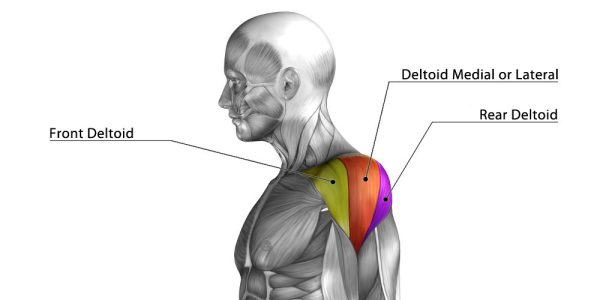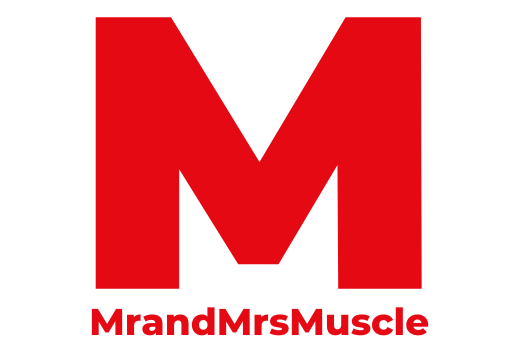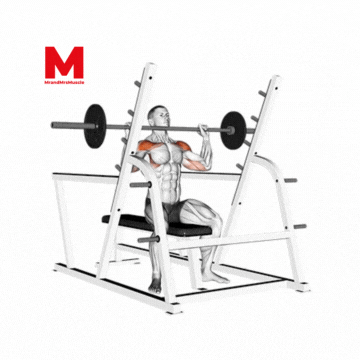Seated Barbell Shoulder Press Overview
The seated barbell shoulder press is a compound exercise that primarily targets the shoulders, triceps, and upper body muscles. This movement involves pressing a barbell overhead while seated, making it an effective exercise for building shoulder strength and size.
How to perform:
- Starting Position:
- Sit on a bench with your feet firmly on the ground.
- Hold the bar at shoulder level with your palms facing forward.
- Form:
- Exhale and press the bar overhead.
- Hold for a brief second at the top.
- Slowly lower the bar back to the starting position.
- Focus on feeling the burn in your shoulders to ensure effective muscle engagement.
Personal Trainer Tips:
- Start Light: Begin with a weight that allows you to maintain proper form. Gradually increase the weight over time to challenge your muscles and promote growth.
- Control the Weight: Use your muscles to lift the weight, avoiding momentum.
- Complete Range of Motion: Lower the barbell to at least chin level for full muscle engagement.
- Engage Your Core: Maintain proper posture and stability throughout the exercise.
- Breathe Properly: Exhale while pressing the weight overhead and inhale while lowering it.
Standing vs. Seated Shoulder Press:
The seated shoulder press reduces the need for core stabilization compared to the standing version, allowing for greater isolation of the deltoids. This is beneficial for targeted shoulder development, especially for athletes and bodybuilders.
Important Note:
While the barbell shoulder press effectively builds strength, starting without warming up or using excessive weight can lead to injury. Always warm up and stretch your shoulder muscles before starting the exercise, and choose a weight appropriate for your fitness level.
Seated Barbell Shoulder Press – Benefits
1. Shoulder Development:
The barbell shoulder press is fundamental for developing and strengthening shoulder muscles, particularly the deltoids. The deltoids consist of three parts:

- Anterior Deltoid (Front Shoulder): The primary mover during the press, responsible for lifting the arm forward and stabilizing the shoulder joint.
- Medial Deltoid (Lateral Shoulder): Helps raise the arm out to the side and stabilizes the arm during the press.
- Posterior Deltoid (Rear Shoulder): Works to counterbalance the front delt and maintain proper shoulder posture.
2. Compound Exercise:
As a compound lift, the barbell shoulder press engages multiple muscle groups, including:
- Deltoids: Primary movers.
- Triceps Brachii: Engaged during the pressing motion.
- Core Muscles: Activated to maintain proper spinal alignment.
This synergistic activation supports overall upper body development and stability.
3. Functional Movement:
The shoulder press mimics everyday pushing movements, such as putting away groceries or lifting objects overhead. Strengthening these muscles improves your ability to perform daily tasks and reduces the risk of injury.
4. Builds Upper Body Strength:
Progressive overload with the seated barbell shoulder press can lead to significant increases in upper body strength and power, enabling you to lift heavier weights over time.
Muscles Worked
- Deltoids (Shoulders)
- Anterior deltoid
- Medial deltoid
- Posterior deltoid
- Triceps Brachii (Back of the Upper Arm)
- Core Muscles
Incorporating the seated barbell shoulder press into your workout routine can enhance upper body strength, improve functional movement, and develop well-defined shoulder muscles.

